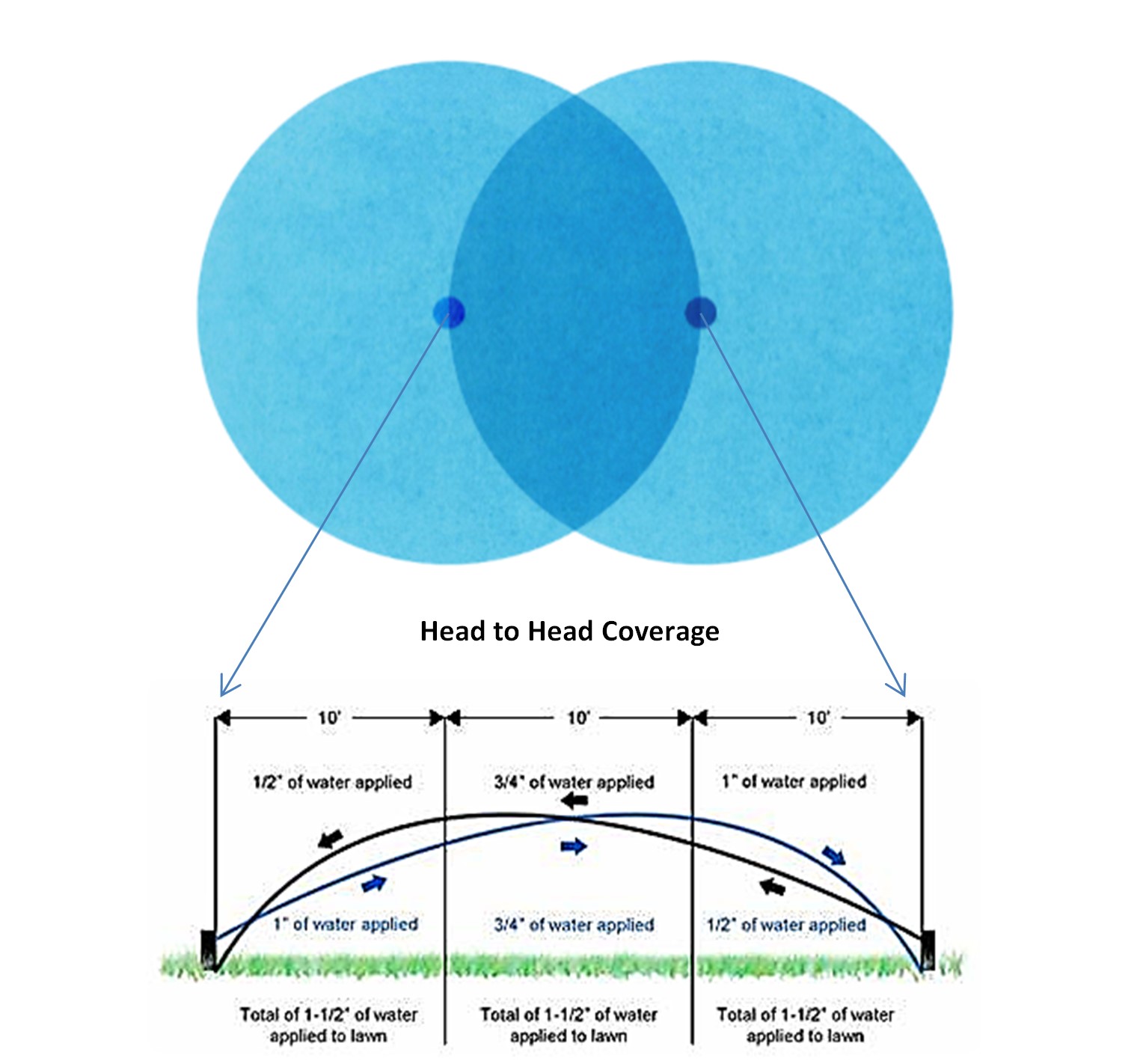Article by Shauna Burnell, Waterkind Irrigation Consulting Services Ltd.
Photo by Judie Steeves
Distribution Uniformity (DU) is important to understand with respect to scheduling of irrigation systems. DU is shown in decimal or percentage form (eg: 0.7 or 70% DU). A reference table from the Irrigation Association for expected DU’s is shown below. Distribution Uniformity refers to how evenly an irrigation system provides water over a given area. The term is often interchanged with system efficiency and while they overlap, they are not identical. The DU of an irrigation system is not impacted by the operation of the system. It is a direct reflection of how the system was installed and how that system has been maintained. Irrigation system efficiency is a product of the DU of an irrigation system, combined with how that system is operated. To obtain a high DU using pop up sprinklers (spray heads or rotors), in a turf grass area, those sprinklers must provide head-to-head coverage throughout the area. Head-to-head coverage means that the end of the spray from one sprinkler reaches or extends just past, the sprinklers around it. This ensures that the area has at least double coverage everywhere and results in a high DU. Pop up sprinklers do not provide equal amounts of water across their spray spectrum, but when the surrounding sprinklers provide supportive coverage, a more even pattern results (see images below). When we have an irrigation system with a high DU, it is much easier to schedule and irrigation water use and costs go down. When a system has a low DU, it is telling us that the coverage is uneven. Some zones may be performing well, while others are not. Scheduling with these conditions requires a system manager to irrigate to the weakest point so as not to lose plant material. The areas with lower DU can then receive enough irrigation to survive, while those with higher DU end up being overwatered. To illustrate this point, imagine you want to deliver 1” (25.4mm) of water to your yard. Some areas have a high DU at 75% (0.75), while others are much lower at 50% (0.5). To determine how much you will need to provide (and how long the zones will need to operate) so that your landscape will receive the 1” it requires you would use the formula 1” / DU = required water. Thus the high DU area would require 1”/0.75 = 1.33” of water and the low DU area would require 1” / 0.50 = 2” of water. Finding a way to keep all areas healthy when some will need 50% more water 1.33” vs 2”), is very challenging.
Table 1 – Distribution Uniformity Ranges
One way of getting an idea of your DU is to place some small containers out in your irrigated area. They need to be all the same size (tuna tins or small straight sided bowls will work). Turn on your irrigation system for 10 minutes and then compare the relative amounts of water in each container. If the amount varies by a factor of two or more, your DU is probably substandard.
So if you believe your system has a low DU and/or you feel you are using too much water, improving your irrigation system’s performance will save you water and money and make your plant material happier. And the good news is that for many irrigation systems, some tweaking and adjustments can have significant impacts.
City of Kelowna water customers can request a free Water Smart irrigation assessment at watersmart@kelowna.ca

Fig. 1 – Head to Head Coverage
If you want to save water, pay attention to your Distribution Uniformity




0 Comments